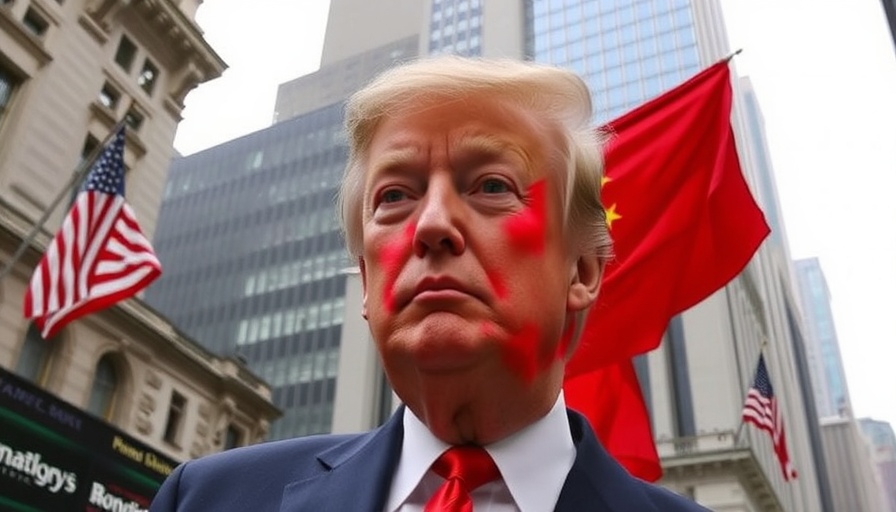
US Stocks Plummet Amid Renewed Trade War Fears
On a day that shocked investors, U.S. stocks closed sharply lower following former President Donald Trump's threats to impose new tariffs on Chinese imports. The S&P 500 recorded its steepest loss since April, with a decline of 2.7%, amidst widespread fears that the fragile trade truce between the United States and China may unravel.
The Context Behind the Market Response
Trump's recent statements revived memories of the trade war that had previously rattled the global economy. In a post on social media platform Truth Social, Trump declared he was considering a "massive increase" in tariffs, potentially reaching up to 100% on Chinese goods. This announcement came shortly after China hinted at implementing export controls on critical materials like rare earth metals, further escalating tensions between the two nations.
The reaction in the financial markets was immediate: the Dow Jones Industrial Average fell nearly 879 points, a decline of 1.9%, while the Nasdaq composite dropped by 3.6%. The drop in stock prices echoed sentiments from investors regarding the uncertainties surrounding trade negotiations, which has kept them on edge for several months. "We haven't even gotten a trade deal finalized, and this development could jeopardize any hopes of a resolution," noted an analyst from Interactive Brokers.
What Is at Stake With New Tariffs?
The implications of Trump's new tariff threats are profound. Rare earth elements are crucial for various sectors, including technology and defense. According to analysts, Trump's proposed tariffs might restrict imports of these essential materials and trigger a slowdown in multiple industries reliant on them. "If tariffs escalate, it could decimate electric vehicle production and impact everything from military software to consumer electronics, resulting in far-reaching economic consequences," explained a market strategist.
Historical Context of the Trade War
The current situation reflects the ongoing and turbulent history of U.S.-China trade relations. The previous trade war saw tariffs reach unprecedented levels, which led to significant market volatility and economic repercussions not just in the U.S., but globally. Previously, Trump had agreed to lower tariffs as part of a temporary trade truce, but renewals of heavy tariffs could shock the already brittle market further.
Potential Scenarios Moving Forward
With Trump’s announcement sparking fast responses in the market, several scenarios could unfold. Investors might adopt a 'risk-off' approach, favoring safer asset classes in place of equities, especially tech stocks sensitive to trade conditions. Economists suggest that a protracted trade conflict could impair corporate profits, making them even more cautious about long-term investments.
Should the U.S. proceed with these tariffs, China is likely to retaliate, which would further complicate any potential dialogues between the two economic superpowers.
What Investors Should Consider
For investors, it's crucial to stay informed about developments in trade negotiations. As seasoned investor José Torres remarked, “In market environments disrupted by political decisions, maintaining a diversified portfolio could be key to weathering the storm.” For those heavily invested in technology or manufacturing sectors, it may be wise to reassess exposure to potential trade vulnerabilities.
As we navigate through these turbulent times, understanding the potential shifts in U.S.-China trade relations and their economic implications will be crucial for both institutional and retail investors alike.
 Add Row
Add Row  Add
Add 




Write A Comment